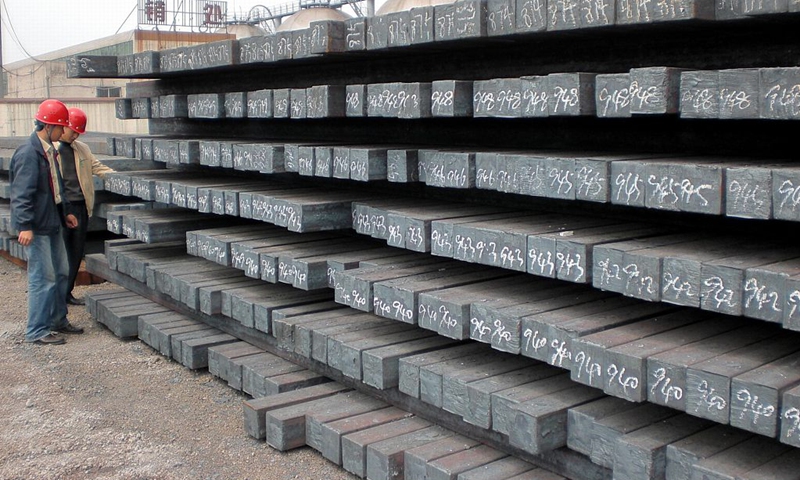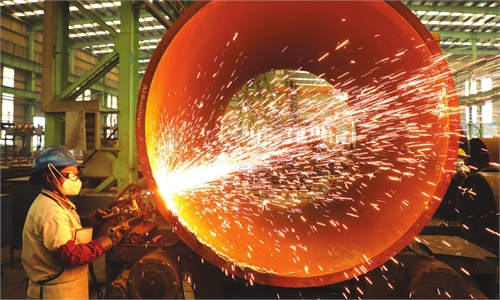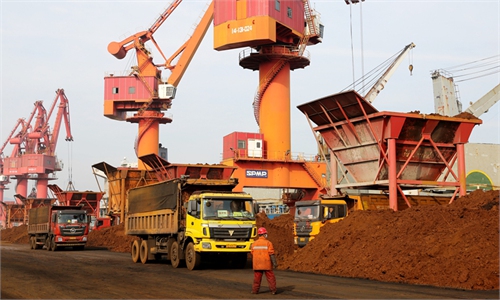
Steel billets Photo: CFP
Even though the recent price decline of iron ore futures has caused concerns about steel demand in China - the world's largest steel producer - an investment-driven economic structure ensures that China's steel demand will grow in 2021, despite government orders to reduce steel output, industry analysts said.Following the government's directive to lower steel production capacity - an effort that China is making to protect the environment and to reach its climate goal of carbon neutrality by 2060 - iron ore futures on both the Dalian Exchange and Singapore Exchange have dropped significantly in recent days.
As of 11 am on Monday the price of iron ore futures dropped to 996 yuan ($153) compared with the previous trading day - a 6.7-percent decrease - while the price of iron ore futures on the Singapore Exchange dropped as much as 5 percent.
Singapore major news outlet Lianhe Zaobao reported that the iron ore price drop was caused by China's steel production reduction plan, which has caused concern about future demand for steel in China - the world's largest steel market.
President of the China Metallurgical Industry Planning and Research Institute Li Chuangxin told the Global Times on Monday that the fluctuation in the iron ore price could be triggered by volatile demand for iron ore. However, the pricing of iron ore futures involves many factors including international supply, capital and others.
"The fluctuation of the price of iron ore futures can't be analyzed by demand change alone, and, as capital investment still accounts for a large portion of China's annual GDP, steel demand is very likely to increase as the country has set the GDP growth target at more than 6 percent for 2021," Li said.
In order to achieve the goal of carbon neutrality by 2060, China plans to have its carbon emissions peak in 2030, according to the government work report released during this year's NPC session. China is also trying to have carbon emissions in the steel sector reach a peak in 2025, according to a statement from China's Ministry of Industry and Information Technology.
Currently, many cities in China including Tangshan in North China's Hebei Province - a major steel producing city - have worked out plans to reduce steel production.
"This year is the first year of China's 14th Five-Year Plan period (2021-25) which could be taken as a new beginning of reform on steel's supply side, so total steel output of China is expected to be trimmed this year," Wang Guoqing, research director at the Beijing Lange Steel Information Research Center, told the Global Times on Monday.
According to Wang, China's steel production in 2020 reached 1.06 billion tons. The impact of the steel reduction plan could be big, as it could reduce 30 million tons of pig iron.
To address possible steel shortage, Wang suggested that the country could move to increase steel imports. And, China should also increase the use of scrap steel, he said.



